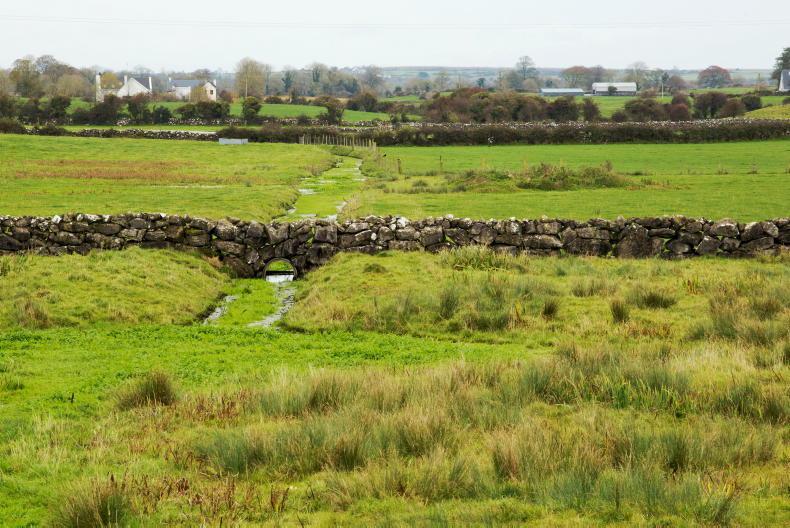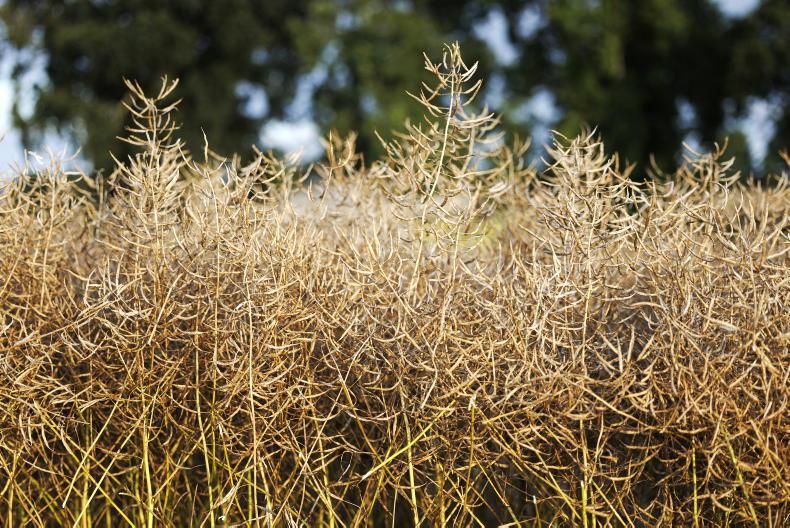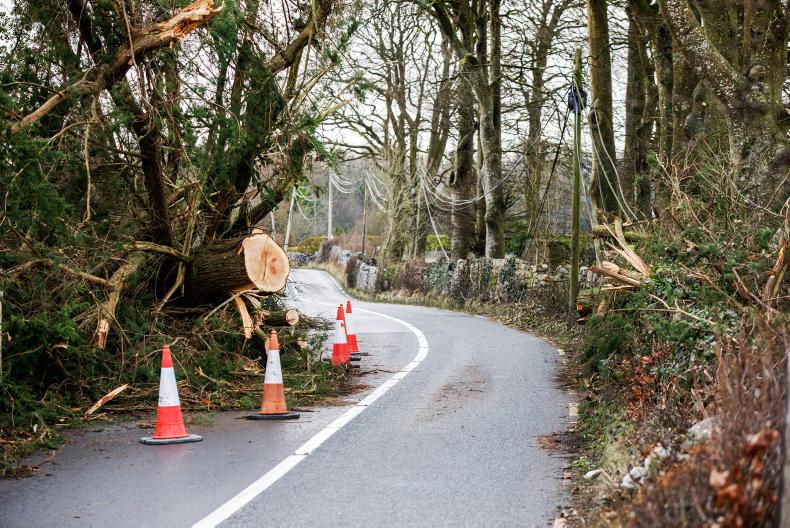Thousands of Irish farmers on drained peat soils will not know the impact a proposed EU nature law will have on their lands until two years after the law is passed under the timeframe of the legislation.
The European Commission plans on passing a nature restoration law by the end of the year, with a view to having the law come into effect in 2024.
The law was put forward last summer, with targets laid out for restoring a range of ecosystems in line with the EU Green Deal and with specific targets for the country’s estimated 330,000ha of drained farmed peatlands. However, no impact assessment has been carried out on the law to evaluate how many farmers will be affected, or what payments would be needed to compensate farmers if they agree to restore and rewet their lands.
If the law passes as it currently stands, Ireland will have two years to complete a national restoration plan, mapping all farmland on drained peat soils, as well as setting out which measures it intends to carry out on these lands to meet the targets agreed.
This plan will be required by 2026, necessitating a “huge data gathering exercise” over a “really, really tight” timeline, Áinle Ní Bhriain of the National Parks and Wildlife Service (NPWS) told an IFA meeting last week.
Minister of State Malcolm Noonan stated that “restoration does not mean rewetting to surface-level in all cases” and pointed to cutaway bogs on State lands as a way of meeting some of the targets.
However, the IFA remained completely opposed to the proposals and called on the EU to set out a pathway to its targets through voluntary agri-environmental schemes.
“You need to go back to the drawing board, you need to redesign this completely because, ultimately, when this becomes a law, the damage will have already been done,” IFA environment chair Paul O’Brien told the NPWS delegates.
Farmers attending the meeting expressed serious concerns that the law could sterilise their land by limiting the potential for productive farming on peat soils.
The NPWS’s Andy Bleasdale recognised farmers’ concerns but sought to reassure them that implementing the law will be different to imposing Natura 2000 designations.
“This is not a new designation attempt, this is not designation by stealth, it is not land sterilisation. I know those phrases based on experience of the past might worry you, but that is not the intention,” Bleasdale said.

There are around 330,000ha of drained, farmed peatlands in Ireland, but this estimate has to be verified. \ David Ruffles
An updated draft of the law outlining EU ministers’ views on the law suggests that targets could be softened and the push to rewet land eased, if their position is taken on board by MEPs and the European Commission.
This newest draft could save thousands of hectares of farmland from rewetting and restoration measures, when compared with what the Commission had initially put on the table.
It also suggests that rewetting should not mean making land “wet underfoot”, as had been initially proposed.
The EU ministers’ proposed targets are:
2030: to restore 30% of drained, farmed peatlands, with half of this area rewet.2040: to restore 40% of drained, farmed peatlands, with half of this area rewet.2050: to restore 50% of drained, farmed peatlands, with half of this area rewet.However, a cohort of green-leaning MEPs are seeking to amend the targets upwards instead of downwards, leaving the direction of the trilogue negotiations that will ultimately determine the final EU position still unclear.
Read more
Thousands of hectares of drained farm peatlands targeted for rewetting
Over 100,000ha targeted for rewetting
Greens demand Irish MEPs back EU rewetting and pesticide laws
MEP group rejects EU rewetting and pesticide plans
Thousands of Irish farmers on drained peat soils will not know the impact a proposed EU nature law will have on their lands until two years after the law is passed under the timeframe of the legislation.
The European Commission plans on passing a nature restoration law by the end of the year, with a view to having the law come into effect in 2024.
The law was put forward last summer, with targets laid out for restoring a range of ecosystems in line with the EU Green Deal and with specific targets for the country’s estimated 330,000ha of drained farmed peatlands. However, no impact assessment has been carried out on the law to evaluate how many farmers will be affected, or what payments would be needed to compensate farmers if they agree to restore and rewet their lands.
If the law passes as it currently stands, Ireland will have two years to complete a national restoration plan, mapping all farmland on drained peat soils, as well as setting out which measures it intends to carry out on these lands to meet the targets agreed.
This plan will be required by 2026, necessitating a “huge data gathering exercise” over a “really, really tight” timeline, Áinle Ní Bhriain of the National Parks and Wildlife Service (NPWS) told an IFA meeting last week.
Minister of State Malcolm Noonan stated that “restoration does not mean rewetting to surface-level in all cases” and pointed to cutaway bogs on State lands as a way of meeting some of the targets.
However, the IFA remained completely opposed to the proposals and called on the EU to set out a pathway to its targets through voluntary agri-environmental schemes.
“You need to go back to the drawing board, you need to redesign this completely because, ultimately, when this becomes a law, the damage will have already been done,” IFA environment chair Paul O’Brien told the NPWS delegates.
Farmers attending the meeting expressed serious concerns that the law could sterilise their land by limiting the potential for productive farming on peat soils.
The NPWS’s Andy Bleasdale recognised farmers’ concerns but sought to reassure them that implementing the law will be different to imposing Natura 2000 designations.
“This is not a new designation attempt, this is not designation by stealth, it is not land sterilisation. I know those phrases based on experience of the past might worry you, but that is not the intention,” Bleasdale said.

There are around 330,000ha of drained, farmed peatlands in Ireland, but this estimate has to be verified. \ David Ruffles
An updated draft of the law outlining EU ministers’ views on the law suggests that targets could be softened and the push to rewet land eased, if their position is taken on board by MEPs and the European Commission.
This newest draft could save thousands of hectares of farmland from rewetting and restoration measures, when compared with what the Commission had initially put on the table.
It also suggests that rewetting should not mean making land “wet underfoot”, as had been initially proposed.
The EU ministers’ proposed targets are:
2030: to restore 30% of drained, farmed peatlands, with half of this area rewet.2040: to restore 40% of drained, farmed peatlands, with half of this area rewet.2050: to restore 50% of drained, farmed peatlands, with half of this area rewet.However, a cohort of green-leaning MEPs are seeking to amend the targets upwards instead of downwards, leaving the direction of the trilogue negotiations that will ultimately determine the final EU position still unclear.
Read more
Thousands of hectares of drained farm peatlands targeted for rewetting
Over 100,000ha targeted for rewetting
Greens demand Irish MEPs back EU rewetting and pesticide laws
MEP group rejects EU rewetting and pesticide plans











SHARING OPTIONS